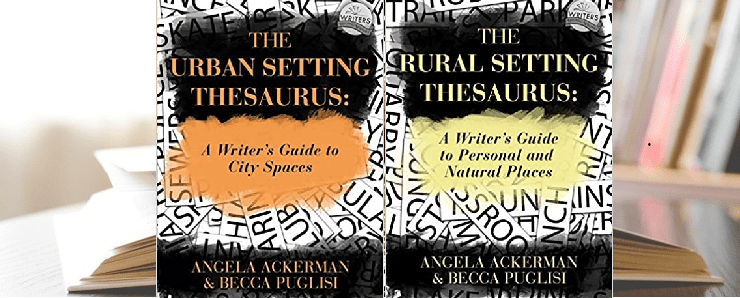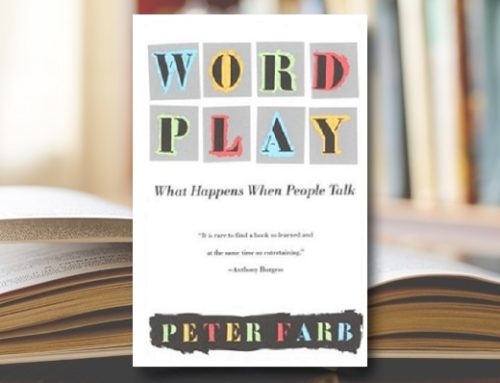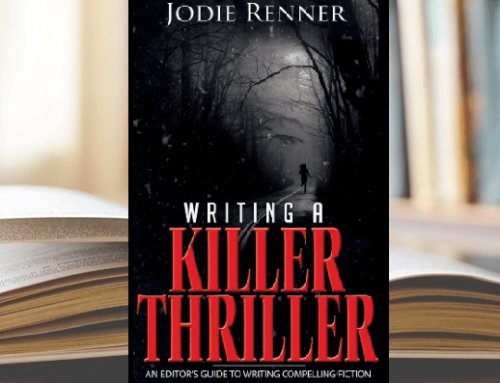Ackerman & Puglisi have published several helpful thesauruses for writers. This review covers both their urban and their rural setting thesauruses, which they recommend be used together.
The Urban Setting Thesaurus: A Writer’s Guide to City Spaces
Drawing Readers in Through Emotion-Driven Imagery and Realism
Introductory Chapters
The first part of the book consists of eight chapters filled with advice. The authors start by dispelling the misconception that the setting isn’t important. They explain how it can be used as a vehicle for characterization and for delivering backstory, and how vital careful choice of location is. They illustrate the effects of sensory details—sights, smells, sounds, tastes, and textures—and discuss the pros and cons of letting your story take place in a real-life location. Other chapters cover common setting snags—for example, overdescribing, providing too many technical details, or relying just on one sense—or deal with additional considerations, like making common urban settings unique by filling them with specific details. The introductory part closes with final thoughts from the authors.
Urban Thesaurus
The main part of the book is made up of the thesaurus, which is separated into five subdivisions: In the City; Restaurants; Retail Stores; Sports, Entertainment and Art Venues; and Transportation. All in all, there are over 120 urban settings.
In In the City, for example, you’ll find descriptions of places as varied as an alley, a car wash, a courtroom, a fire station, a homeless shelter, a library, a military base, a small town street, and an underpass; in Restaurants, you’ll discover all types of dining and drinking venues, from a bakery and a bar to a deli, a fast food restaurant, and an ice cream parlor; in Retail Stores is an antiques shop, a bookstore, a hardware store, a jewelry store, a pawn shop, even a psychic’s shop, and of course, a shopping mall. Sports, Entertainment and Art Venues takes you to locations like an amusement park, an art gallery, a black-tie event, a carnival funhouse, an indoor shooting range, a nightclub, an outdoor pool, a parade, a recording studio, a Vegas stage show, and a zoo; and Transportation gives you insights into an airplane, an ambulance, a fishing boat, a military helicopter, a submarine, a train station, and a yacht—just to name a few in each category.
Every setting is introduced with comprehensive lists of the sights, sounds, smells, tastes, textures and sensations that you are likely to encounter at the scene. In addition, the authors point out the people commonly found there and offer suggestions for possible sources of conflict. There’s also a reference to related settings, which are described in this book. Setting notes and tips alert writers to things to watch out for and consider, like the impact of the time of year on the setting.
At the end of each entry, the authors present a setting description example and specify the techniques and devices used (like contrast, multisensory descriptions, metaphor, symbolism, weather) and the resulting effects (for example, hinting at backstory, foreshadowing, or reinforcing emotion).
Final Chapters
The guide includes two appendices: An Emotional Value Tool, which prompts the writer to come up with emotional triggers (like atmospheric triggers, people triggers, or details at the location that have a symbolic meaning for the character) to intensify the effect of their setting, and a Setting Checklist with important points to consider: for example, what the writer is trying to accomplish with the description. It closes with Recommended Reading, a list of books that cover different aspects of creative writing, including additional thesauruses by Ackerman & Puglisi.
The Rural Setting Thesaurus: A Writer’s Guide to Personal and Natural Places
Making the Story World Rich, Layered, and Unforgettable
Introductory Chapters
The seven chapters preceding the thesaurus explain how to craft settings that evoke emotional reactions and how the setting can be used as a vehicle for conflict, for establishing mood, and for steering the story. The authors show how figurative language can improve setting description and highlight common setting snags writers should try to avoid, like lengthy descriptions. The first part of the book ends with considerations relevant to rural settings (like the importance of getting real settings and landforms right), followed by final thoughts from the authors.
Rural Thesaurus
Divided into four parts—At Home, At School, Rural Sights, and Nature and Landforms—the thesaurus will get you acquainted with the details of over 100 rural settings. In At Home, these include an attic, a backyard, a birthday party, a bomb shelter, a chicken coop, a greenhouse, a house fire, a motor home, a secret passageway, a treehouse, and a wine cellar; in At School, these include a boarding school, a dorm room, a high school cafeteria and hallway, a principal’s office, a prom, a school bus, and a university lecture hall. In Rural Sights. you’ll find everything from ancient ruins, a beach party, a church, and a farmer’s market to a hunting cabin, a lighthouse, a mausoleum, a rodeo, and a wedding reception. An arctic tundra, a cave, a desert, a hiking trail, hot springs, moors, a pond, a swamp, and a tropical island are some of the locations featured in Nature and Landforms.
For each of the rural settings, the authors compiled characteristic sights, sounds, smells, tastes, textures and sensations. As in the urban setting thesaurus, there’s information about people commonly found in these settings, suggestions for possible sources of conflict, and references to related settings in the thesaurus. You’ll also find setting notes and tips as well as a setting description example with information on the techniques and devices used (like light and shadow, simile, personification, or hyperbole) and the resulting effects (like characterization or establishing mood, tension, and conflict).
Final Chapters
The book ends with two appendices—Setting Exercises (listing sensory details for a specific location and describing the same setting in different ways to achieve different results) and a Setting Planner Tool (a chart with room for noting various aspects of a setting, like sensory details, weather, mood, symbols)—followed by a Recommended Reading list of other writing craft guides and more thesauruses by Ackerman & Puglisi.
The Takeaways
What you can achieve with the help of your setting
For characterization, put the setting into context with your character instead of simply describing it
Settings can be used to let a character’s personality shine through: For example, the character’s home or workplace includes many details and objects that disclose their tastes and interests. Describing a character’s reaction to his or her surroundings—be it what items stand out to them, what feelings a specific detail elicits, or what characters do in response to what’s happening at the location—is another possibility to give readers insight into who they are.
For maximum impact, add an emotional value to your setting
An excellent way to display personality traits is by giving your setting an emotional connection to the character: For example, the location could have a special meaning for them due to a related experience or could be filled with emotional triggers that provoke a response in them. Including sensory details that stand in relation to the emotions you want to evoke can also be used to enhance a specific mood.
Mood influences the setting—the setting can help convey the mood
Since the weather is usually connected with specific feelings (for example, sun with happiness) and the seasons have symbolic meanings (for example, winter and death), they are a great vehicle for establishing a specific mood. To make the descriptions unique instead of using clichés, show them filtered through your character’s viewpoint and current emotions. Light and shadow are also effective ways to elicit a desired mood, and changes in the lighting can change the mood without changing the setting.
To convey backstory, let your characters interact with the setting
This can be achieved on a macro or on a micro level: for example, by having a certain location or a specific object trigger memories. The setting can also help to reveal character growth by displaying their altered emotional response to the same location. In addition, the setting can be used to hint at backstory by showing the character’s internal reaction to it without giving any other details away at this time (= withholding information to create suspense).
The setting can be used to create conflict
- Physical obstacles can cause setbacks during the hero’s journey.
- Painful experiences can be brought to the forefront of his mind when he visits the place they happened. They might also trigger a reaction that further complicates the plot.
- A specific setting might be frequented by specific people, some of whom might cause problems for the hero.
- Family settings are especially suited for generating tension and conflict.
The setting can help drive and direct the story
- For example, your character could be unhappy at his location and thus be propelled to leave. Or the setting could lead to one of his basic human needs being taken away and motivate him to try to get it back.
- Tests for the protagonist—like obstacles within the setting or the people, objects, and circumstances found there—can force him to prove himself.
- The setting most suitable for reflection depends on the character. Optimally, it has an emotional meaning for him or her.
How to best describe settings
The more different sensory details you use, the more intense the reader experience
To make readers feel as if they are at the story’s location, describe the setting through several senses—and give each detail an emotional meaning:
- To make the sights as effective as possible, show them through the subjective lens of the viewpoint character, colored by his current state of mind.
- Include smells for their power to raise memories and evoke emotions—they will do the same in the reader imagining them.
- Use sounds to provoke feelings or enhance a specific mood, be it positive or negative.
- To incorporate tastes in a significant way, consider the context of the meal and give it additional meaning by making use of comparison (for example, specific characters might prefer specific foods matching their personalities) and contrast (for example, a character could be enjoying a delicious feast when something shocking happens to her).
- Make sure all textures the character comes in contact with are relevant to the story. Use them to activate emotional memories, create a specific mood, or to foreshadow or symbolize.
Effectively describe your setting with figurative language
- Comparisons like similes (using the words “like” or “as” to point out similarities) and metaphors (stating that something “is” something else) not only give the reader a visual but also can convey emotions and information about the character and the location.
- Symbols give meaning to phrases and objects. Personalized symbolism, which is connected to the character’s feelings and memories, has the most impact.
- Motifs are recurring symbols that support and intensify the theme of the story. For example, they can be an object at the location or the location itself. They can also be a season, a weather phenomenon, or an animal.
- Hyperboles help to bring statements across by exaggeration (for example, of specific aspects of the setting) for emphasis.
- Personification brings objects to life by giving them human traits and can be used to create emotions.
Showing versus telling for settings
When describing a setting…
it’s most effective to show if you want to:
- set the mood and elicit emotion
- characterize unfamiliar locations
- divulge backstory
- portray a setting that will change dramatically
- describe an important location
- foreshadow
and best to tell:
- during heart-pounding action scenes (to not slow them down by giving the location too much focus, though minimal descriptions can be shown if they stand in relation to the action)
- if the character’s personality is such that he’s not interested in his surroundings
- in certain cases for effect
Closing thoughts on…
The introductory chapters
I found both thesauruses worthwhile buying for their introductory chapters alone, which impressively illustrate just how powerful a tool the setting can be and showcase many helpful examples. My favorite tip is the personification of objects.
The thesauruses
They cover a vast number of places, some of which you might never be able to—or in some cases even want to—visit yourself. The thoroughly researched details and examples accompanying each entry are a treasure trove for writers. In addition, I found them to be a great stimulus for coming up with sensory details of your own.




